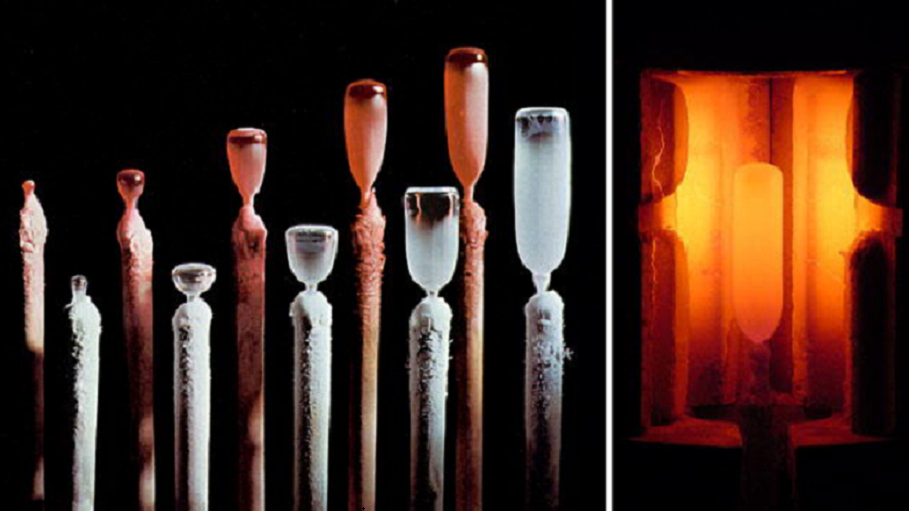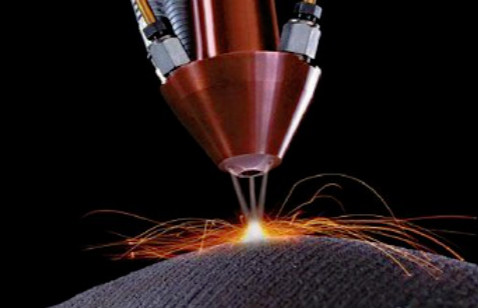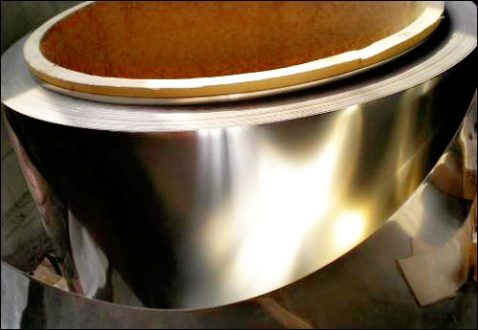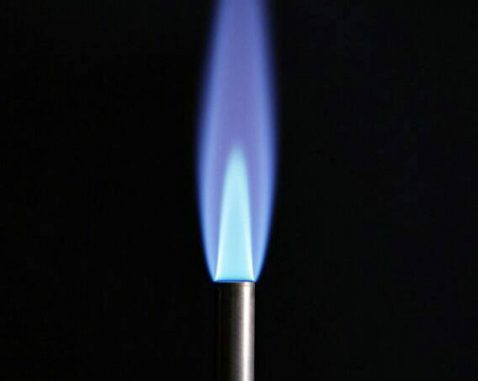All You Need to Know about Refractory Metals

All You Need to Know about Refractory Metals
Want to learn about refractory metals? Then you've come to the right place. In this article, you'll find all you need to know about refractory metals.

All You Need to Know About Refractory Metals
First of all, what are refractory metals?
Refractory metals refer to metals with melting points over 3632°F and certain amounts of reserves, including tungsten, tantalum, molybdenum, niobium, hafnium, chromium, vanadium, zirconium, and titanium.
Usually, refractory metals have great densities and weigh heavily. With refractory metal as the matrix, the alloys added with other elements are called refractory metal alloys, including tungsten alloys, molybdenum alloys, niobium alloys, titanium alloys, vanadium alloys, chrome alloys, rhenium alloys, chromium and zirconium alloys, tantalum and button alloys, etc.
Besides, refractory metals usually can be manufactured into sheet, strip, foil, pipe, bar, thread, profile, and powder metallurgy products, such as tantalum bar, molybdenum wire, tungsten plate, and so on.
Discovery of Refractory Metals
Since refractory metals have very active chemical properties and their extraction processes are complicated, it was late that people discovered refractory metals for the first time.
Molybdenum was first discovered in 1782 by Swedish chemist Jimmer (P.J. Hjelm). Tungsten powder was first extracted by the Spanish de Lure brothers in 1783 with the Carbon reduction method. Chrome was extracted by French chemist L.N.Vauquelin in 1798. In 1866, C.W. Blomstrand discovered niobium by hydrogen reduction of niobium chloride. Plastic tantalum was first extracted by a German called Bolton in 1903. Metal zirconium and titanium were first discovered respectively in 1824 and 1910. Metal rhenium had not been discovered until 1925.
Development of Refractory Metals
- It is until the 20th century that refractory metals were widely used.
- In 1909, W. D. Coolidge, an American, for the first time used the powder metallurgy method to produce tungsten billet. After swaging and stretching, the material became tungsten wires for light bulbs.
- In 1910, molybdenum was processed into rods, pieces, and wires.
- In the mid-1940s, the rapid development of refractory metal materials and their processing technology develops quickly due to the needs of aviation, aerospace, electronics, and atomic energy technology. Therefore, refractory metal melting, powder metallurgy, and plastic processing were promoted.
- In the 1940s, the first vacuum white electric arc furnace appeared.
- In the 1950s, an electron beam smelting furnace was invented.

Electron Beam Smelting Furnace
- From the 1960s, there were many new technologies, including cold, and hot isostatic pressing, precision casting, isothermal deformation, welding, and a series of powder metallurgy, casting, plastic processing, heat processing, and so on.
- With these advanced technologies, a large number of refractory metal and refractory alloy materials were produced.
- In 1956, A. Caverly extracted tungsten, molybdenum, and rhenium single crystals with purity higher than 4N with electron beam suspension area smelting technology.
Properties of Refractory Metals
--Low-Temperature Brittleness
Refractory metals will not easily crack or break under high temperatures and can bear repeated heating or thermal shock. Tungsten, molybdenum, chromium, and other refractory metals at low temperatures are likely to become brittle while turning into ductile under high-temperature conditions.
Ductile-brittle transition temperature (DBTT) is an important index for ductility processing and usage of refractory metals. DBTT can be influenced by many factors, like the material’s purity, ingredients of alloys, processing methods, and structures. There are two ways to reduce DBTT. One is to add alloy elements in refractory metals.
For example, rhenium can be added to tungsten. The other way is choosing more reasonable processing methods, like the technology of plastic processing.
--Oxidation Resistance
Refractory metals of high density are very stable at room temperature and do not easy to be oxidize in air. However, refractory metals will be rapidly oxidized under high temperatures.
Tungsten and molybdenum begin to oxidize at about 752° F. They will be oxidized and generated respectively into WO3 and MoO3 with the temperature going up. When the temperatures reach 1562°F and 1112°F, the materials will be sublimated markedly. Rhenium starts to oxidize at 572°F and turns into Re2O7 at a temperature of 662°F.
Tantalum and niobium begin to oxidize at the temperatures of 536°F and 392°F. When the temperature is over 932°F, they will generate Ta2O5 and Nb2O5. Titanium and zirconium can be oxidized rapidly at temperatures above 1112℉ to 1292℉. The powder of zirconium and titanium can self-ignite in the air and even can burn with explosions.
To fix the oxidation problem, there are two measures. The first one is producing antioxidant alloys and the second one is covering the refractory metals with antioxidant coatings.
However, the problem of refractory metal oxidation under high temperatures has not been solved so far.

Oxidation Resistance
--Oxidation Resistance
Tungsten, molybdenum, and rhenium do not react with hydrogen but their oxides can be reduced to the metal with hydrogen at a certain temperature. Tungsten, molybdenum, and rhenium can become brittle when absorbing hydrogen. When the temperature reaches between 572°F to 932°F, those metals will absorb the large quantity of hydrogen and generate brittle metal hydride.
In high vacuum conditions, hydrogen will be released. Therefore, this feature of refractory metals can be used for producing the alloy powder of titanium, zirconium, tantalum, and niobium.

Hydrogen Reaction
--Corrosion Resistance
Refractory metals have good corrosion resistance. When the temperature is under 302°F, the surface of the tantalum has a dense and stable oxide film. Therefore, the chemical properties of tantalum are very stable.
Tantalum has excellent resistance towards sulfuric acid, hydrochloric acid, nitric acid, phosphoric acid, organic acids, and nitric acid hydrochloride but will be melting in hydrofluoric acid, concentrated alkali solution, and molten base.
The corrosion resistance of niobium is similar to that of tantalum but not as good as Ta. Tungsten is very stable at room temperature in hydrochloric acid, sulfuric acid, nitric acid, hydrofluoric acid, and aqua regia, but it will be easily corroded with sodium nitrate. Molybdenum is similar but not as good as tungsten in corrosion resistance.
In general, tantalum, niobium, titanium, zirconium, and other refractory metals are excellent anti-corrosion materials to work as protective layers.
Applications of Refractory Metals
With the development of science and technology, more and more stringent requirements have been put forward for materials. Nowadays, traditional materials have been unable to meet these new needs, but refractory materials are playing an irreplaceable role in the fields of national defense and military industry, aerospace, electronic information, energy, chemical prevention, metallurgy, and nuclear industry.
--Nuclear Industry
The application of refractory metals in the nuclear industry is mainly zirconium tubes followed by tungsten and molybdenum. Zirconium has good resistance to radiation and waterside corrosion, so it is especially suitable for various pipelines in “Clean Water” reactors.
In order to strengthen nuclear safety and prevent nuclear leakage, the inertial energy storage device of tungsten-based high-density alloy used in the new generation of nuclear reactors can maintain the cooling cycle of 3-5 min without any power after the accident.
In this way, we can gain valuable emergency time for the handling of accidents and prevent the nuclear reactor from burning through and causing nuclear leakage. In addition, refractory metals and alloys are often used as storage tanks for nuclear waste.
--Electronic Information Technology
In the new generation of integrated circuits, the need for heat dissipation and temperature tolerance will increase the demand for tungsten and molybdenum substrate as the wiring becomes thinner and thinner (currently up to 0.2μm). Refractory materials are also widely used in support parts, retaining rings, and base supports in the electronics industry.
Tungsten alloy and W-Cu composite materials are good electrode materials because tungsten has good electron emission function, which has been widely used in EDM, electric locomotive guide blocks, ultra-high voltage switches,es and welding in the power industry.
In addition, W-Re alloy has replaced platinum as a thermocouple for temperature measurement on many occasions, and high-performance tungsten-rhenium wire has also been used as a picture tube to transmit electrons into thousands of homes.
--Space, Ocean, and Medicine
In the 21 century, many countries are actively preparing to build space stations and underwater worlds in the hope of peaceful uses of outer space and the treasure houses of the sea.
There are a lot of dust particles and space junk in outer space, which require high-intensity materials and at the same time can resist the radiation of high-energy rays in the universe. Refractory materials have unique advantages here. For example, the former Soviet Union’s Mir space station and the U.S. space shuttle used a lot of refractory materials.
Similarly, the corrosive action of seawater is intolerable to ordinary materials. Titanium is the best choice for creating a permanent human environment on the ocean floor. It is not only light in weight and high in strength but also has good corrosion resistance.
Niobium alloy has good resistance to blood corrosion and can be used to make vascular scaffolds. W, W-Mo, W-Re, and W-Graphite have been used as X-ray targets in medicine, saving countless lives. Refractory metals are also used in the ultrasonic stone crushing electrode, multidimensional self-assembling ray grating, gamma knife, a collimator of ultrasonic concentrator knife, and other advanced medical facilities.
Other Applications
Tungsten and molybdenum have been widely used as the heating element, heat shield, crucible, and supporting parts for rare earth smelting in a high-temperature furnace. Large tungsten and molybdenum tubes, molybdenum electrodes, molybdenum plating, core rods, and hoppers have successfully replaced platinum in the glass and glass fiber industry and achieved great social and economic benefits.
Refractory metals are also used as electrothermal components and thermal-measuring sleeves for the electrothermal knife and zinc smelting in the textile industry.
Conclusion
Thank you for reading our article - All You Need to Know About Refractory Metals, and we hope it can be helpful to you. If you want to know more about refractory metals, you can visit Advanced Refractory Metals (ARM) for more information.
{{item.content}}
LEVE A REPLY
{{item.children[0].content}}
{{item.content}}






